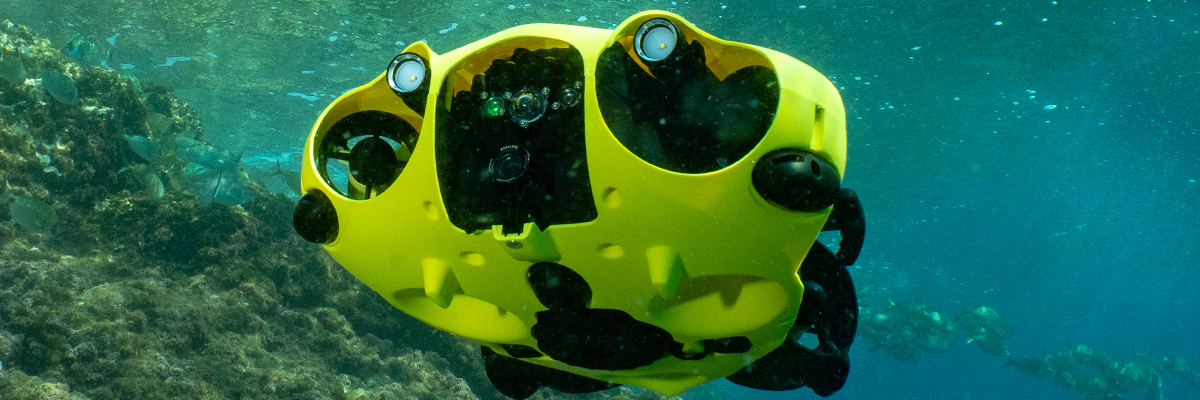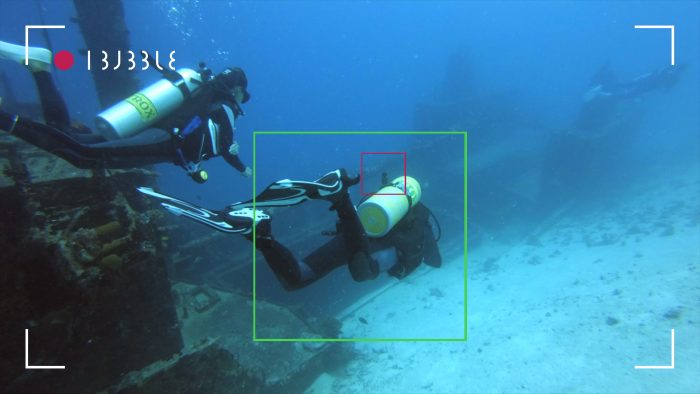
Feature focus: iBubble’s visual tracking technology
iBubble is smart – but why?
iBubble is a unique underwater drone. We have emphasized (with reason!) on the fact that it is the first wireless and autonomous underwater drone on the market. But our baseline is Autonomous. Wireless. Smart. And today, we will tell you why it is smart.
Double tap: tracking twice for a better image framing.
iBubble follows divers underwater thanks to its patented tracking technology. But tracking is a small word that hides a lot of underlying technical processes. To not bore you with the details, let’s just say that its tracking process happens in two steps: first, the acoustic scanning of its environment that we described in our other blog post. Then, another magic trick happens: iBubble will use its eye to “see” what it is tracking. iBubble’s internal camera works in tandem with its hydrophones, much like a human brain uses both its eyes and ears to position itself in a 3D space.
First, iBubble will use its hydrophones to determine the general localization of the diver equipped with the transmitter. The drone’s camera will then scan and target several points on the general shape of the diver to first determine what it is (in our case, a diver!), and then to keep a “lock” on it. These points (for instance, a detail on the diver’s suit or on his or her equipment) are then tracked by iBubble’s vision, even if the diver is swimming away. This process is here to complete and enhance iBubble’s tracking technology.
Visual tracking – not recording
While iBubble uses a camera to see and track underwater, it cannot record what it films for several reasons. In short, you can compare it once again to a human brain: our eyes are not capable of recording what we see (except in some cases, of course!). That’s why we have added a spot on iBubble to place your favorite action camera. It also confirms that iBubble always keeps a eye on you – without recording you without your consent!



